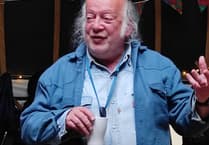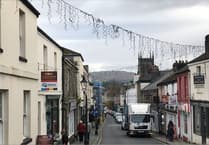A PLANNING application to reinstate the roof of a ‘neglected’ Grade II Listed barn situated on the birthplace of Tavistock’s most famous resident, Sir Francis Drake, has been submitted to West Devon Borough Council.
In September and November last year, the Times printed stories about Mill Barn at Crowndale Farm, on Crowndale Road, which had fallen into disrepair and been labelled as ‘benign neglect’.
The barn is historically important as it is also one of the Duke of Bedford’s model farms.
The farm itself dates from before the 16th century and was the birth place of Tavistock’s favourite seafarer Sir Francis Drake. His parents, Edmund and Mary, were tenant farmers who leased the property from Francis, second Earl of Bedford. The ruins of the farmhouse where Sir Francis Drake was born still lie at Crowndale Farm to this day.
Around eight years ago the barn showed signs that it was in a poor state of repair with substantial water damage. An application was put in by the trustees of Crowndale Estate to WDBC to place a temporary roof on the two-storey barn. The application, valid for five years, was approved but no work was undertaken to secure the building and over time the building deteriorated, so much so that now about 70% of the building roof has failed and collapsed within the building interior.
In January this year the barn was covered with a scaffold canopy to prevent further deterioration and enable works to progress.
The application to reinstate the roof was submitted to WDBC last month and the determination date is June 21.
The existing natural slate and crease (tiles) are to be ‘carefully salvaged and re-used’ on site when required. The new proposed roof is reported to be a galvanised, corrugated profile roof covering.
The application has received one response from a member of the public, who stated: ‘The Mill Barn at Crowndale Farm has been derelict for many years and has become an important roosting site for bats, which are protected species under the Wildlife and Countryside Act. There were also owls nesting in the barn, although these nests may have been destroyed in the roof collapse of June 2018. Sparrow hawks are active around the farm. It is not known where there may be any nests. I believe this planning application needs an ecological assessment to accompany it.’
l The history of Mill Barn pre-dates Tavistock Canal of 1817. The canal follows the old farm’s leat that went to feed the agricultural wheel at Crowndale Barn – the wheel was the biggest agricultural wheel on the length of the canal.



-and-Sally-Ann-(visitor-experience-officer)-trying-ou.jpeg?width=209&height=140&crop=209:145,smart&quality=75)
